- Introduction
- Maintenance
- Preparation
- Service specifications
- Diagnostics
- 2JZ-GE Engine
- 2JZ-GTE Engine
- 2JZ-GTE Turbocharging
- 2JZ-GE Emission control
- 2JZ-GTE Emission control
- 2JZ-GE SFI
- 2JZ-GTE SFI
- Cooling
- Lubrication
- Ignition system 2JZ-GE
- Ignition system 2JZ-GTE
- Starting system
- Charging system
- Clutch
- W58 manual transmission
- V160 manual transmission
- A340E 2JZ-GE automatic transmission
- A340E 2JZ-GTE automatic transmission
- Propeller shaft
- Suspension and axle
- Brake system
- Steering
- Supplemental restraint system
- Body electrical system
- Body
- Air conditioning system
- Place cylinder head on cylinder block
- Place a new cylinder head gasket in position on the cylinder block. Be sure to install it correctly.
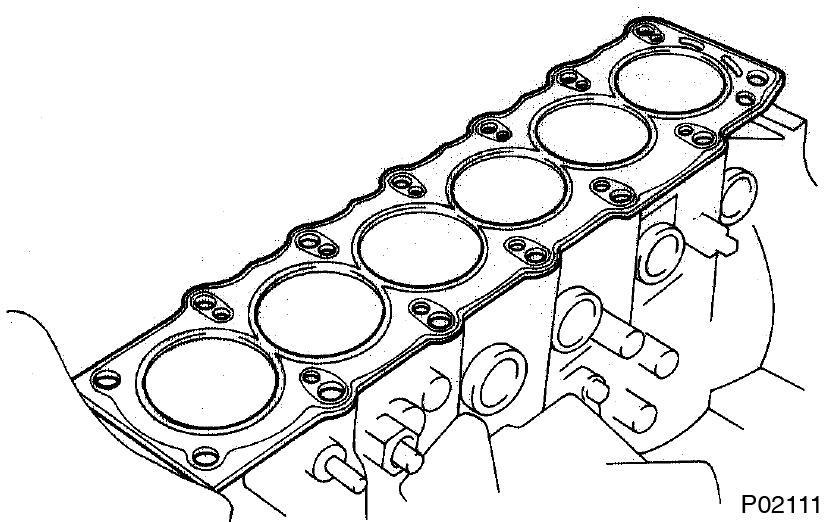
- Place the cylinder head in position on the cylinder head gasket.
- Place a new cylinder head gasket in position on the cylinder block.
- Install cylinder head bolts
- The cylinder head bolts are tightened in 2 progressive steps (steps (c) and (f)).
- If any of bolts break or deform, replace them.
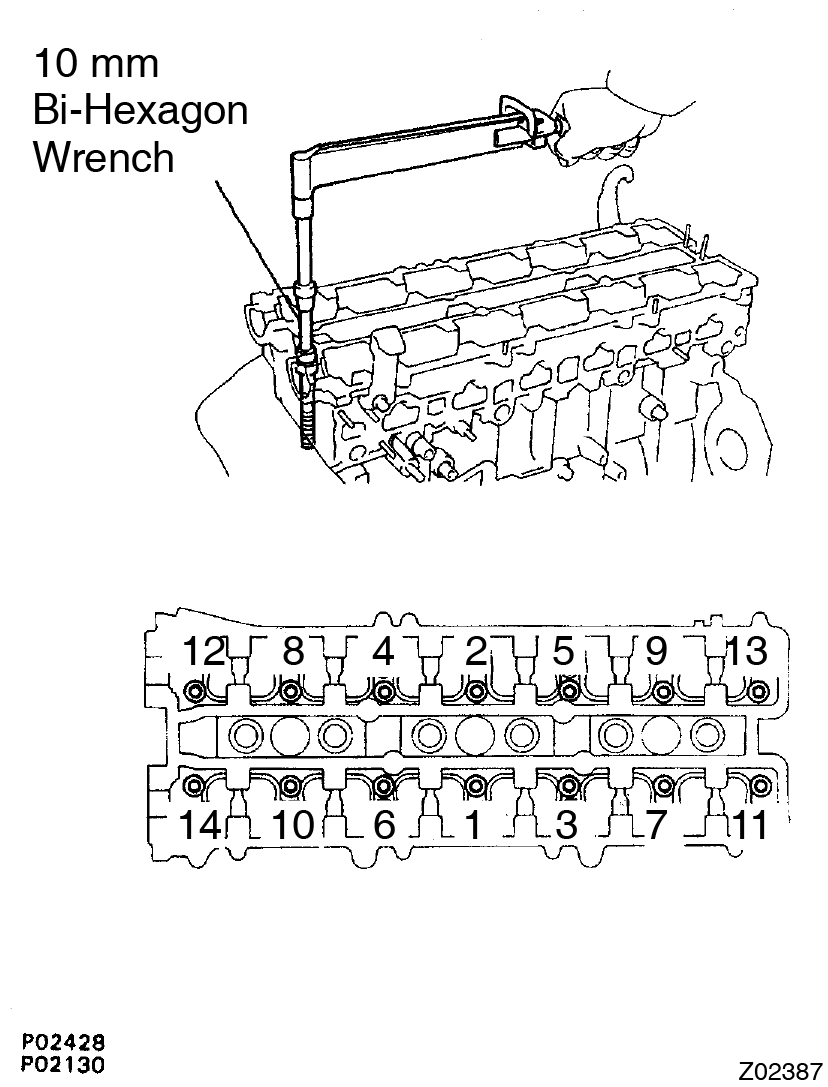
- Apply a light coat of engine oil on the threads and under the heads of the cylinder head bolts.
- Install the 14 plate washers to each cylinder head bolt.
- Using a 10 mm bi-hexagon wrench, uniformly tighten the cylinder head bolts, in several passes, in the sequence shown.
Torque: 34 N·m (350 kgf·cm, 25 ft·lbf)
If any of the bolts do not meet the torque specification, replace the bolt. - Mark the front of the cylinder head bolt head with paint.
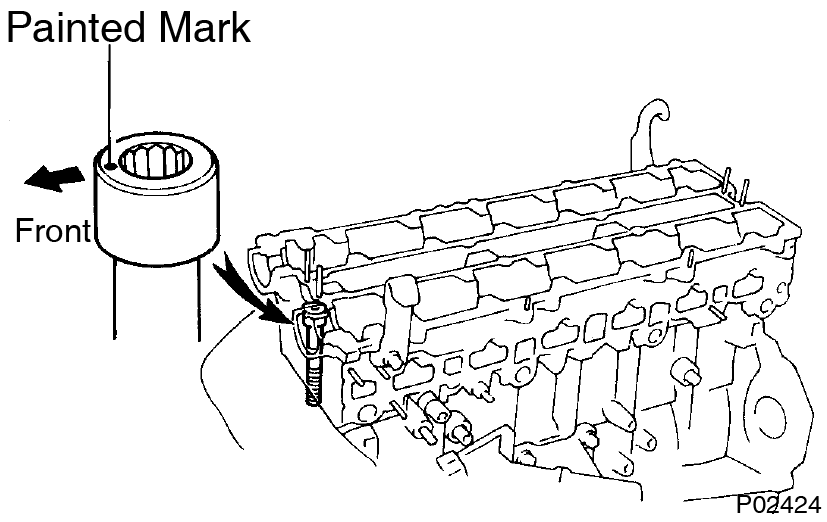
- Retighten the cylinder head bolts by 90° in the numerical order shown in the illustration on previous page.
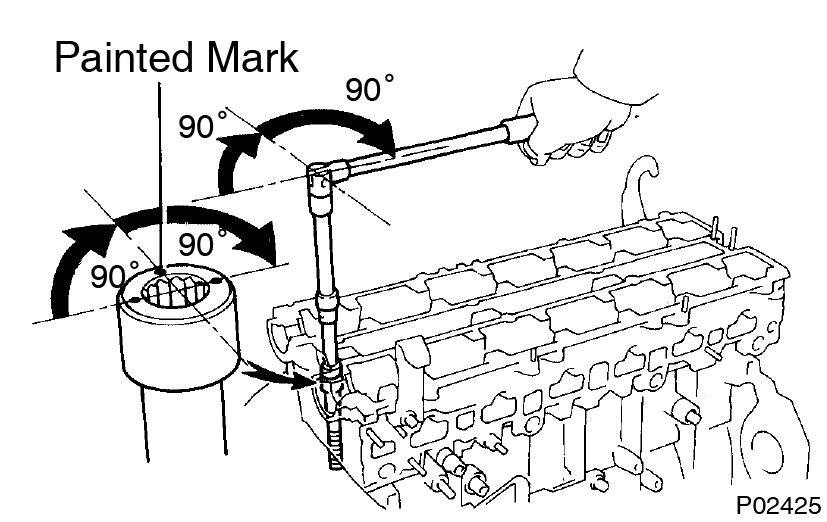
- Retighten cylinder head bolts by an additional 90° shown in the illustration on previous page.
- Check that the painted mark is now turned to the rear.
- Install camshafts
- Apply engine oil to the thrust portion of the camshaft.
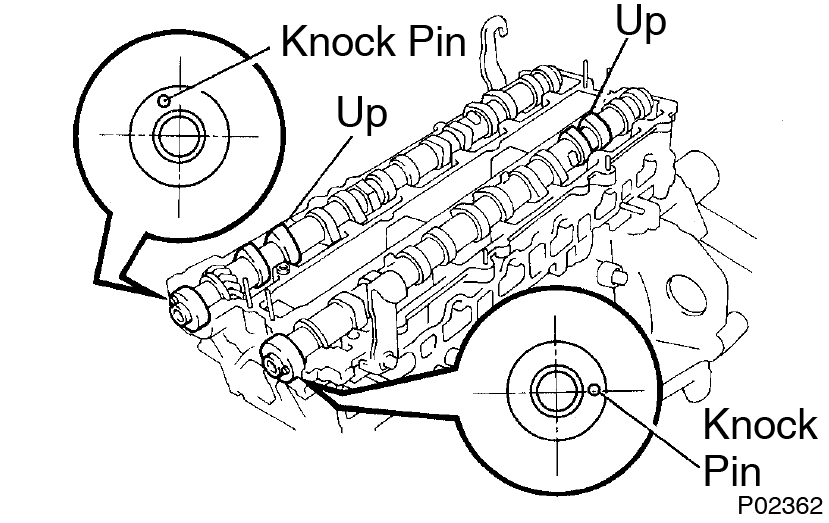
- Place the camshaft on the cylinder head with the cam lobe facing up as shown.
- Place the No.3 and No.7 bearing caps in their proper location.
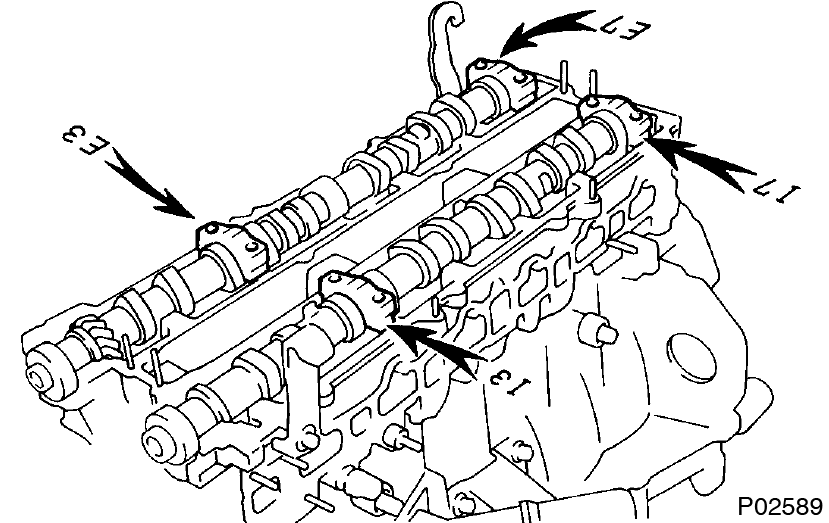
- Apply a light coat of engine oil on the threads and under the heads of the bearing cap bolts.
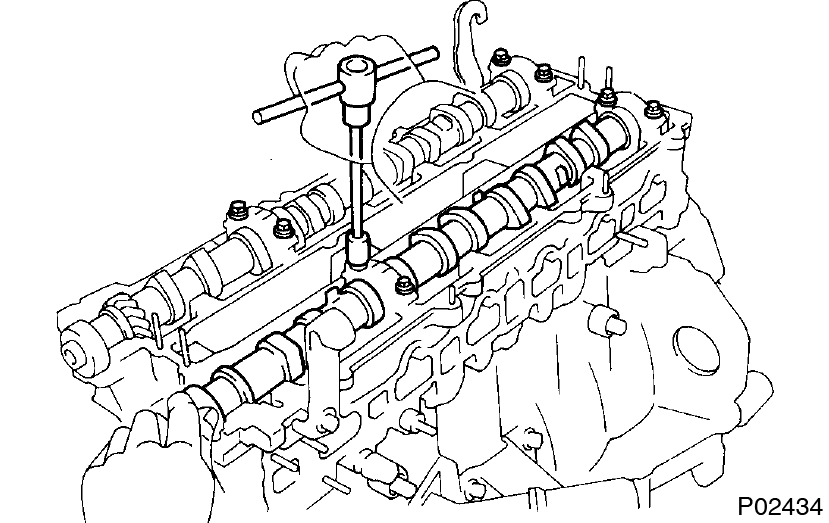
- Temporarily tighten these bearing cap bolts uniformly and alternately, in several passes, until the bearing caps are snug with the cylinder head.
- Apply MP grease to a new camshaft oil seal lip.
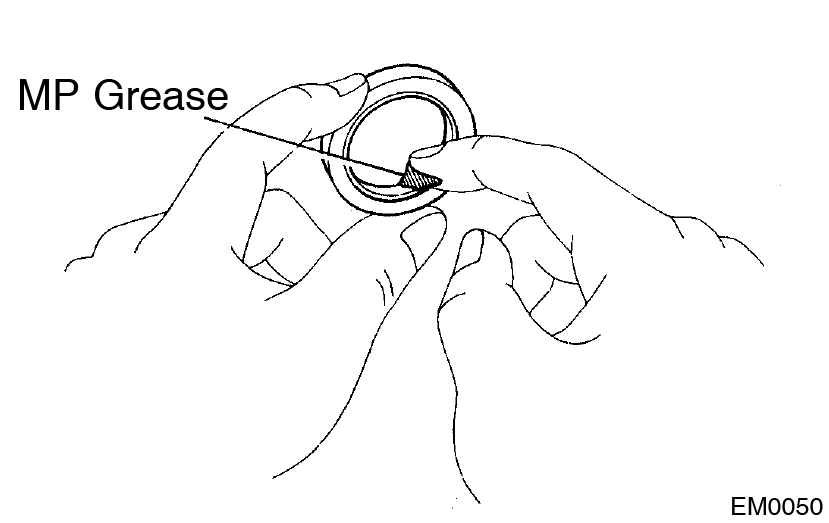
- Install the 2 oil seals to the camshafts.

- Clean the installed surfaces of the No.1 bearing cap and cylinder head with cleaner.
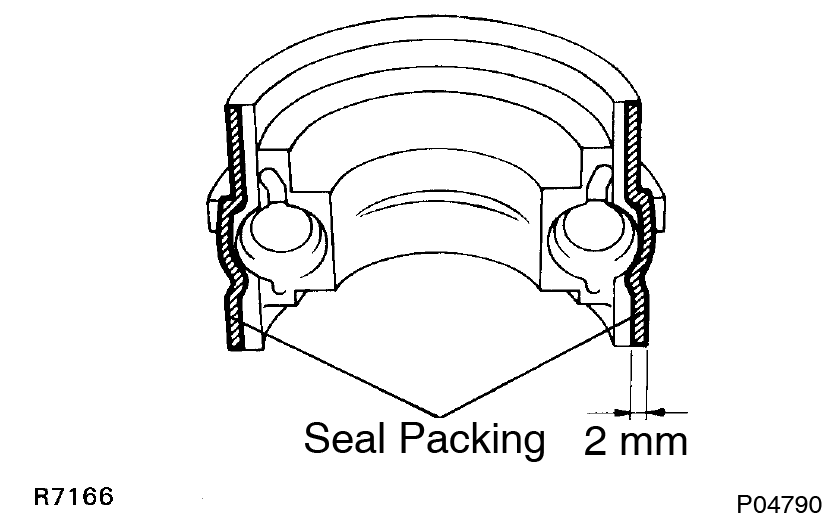
- Apply seal packing to the No.1 bearing cap as shown.
Seal packing: Part No. 08826-00080 or equivalent - Install the No.1, No.2, No.4, No.5 and No.6 bearing caps in their proper locations.

- Apply a light coat of engine oil on the threads and under the heads of the bearing cap bolts.
- Install and uniformly tighten the 14 bearing cap bolts on one side, in several passes, in the sequence shown.
Torque: 20 N·m (200 kgf·cm, 14 ft·lbf)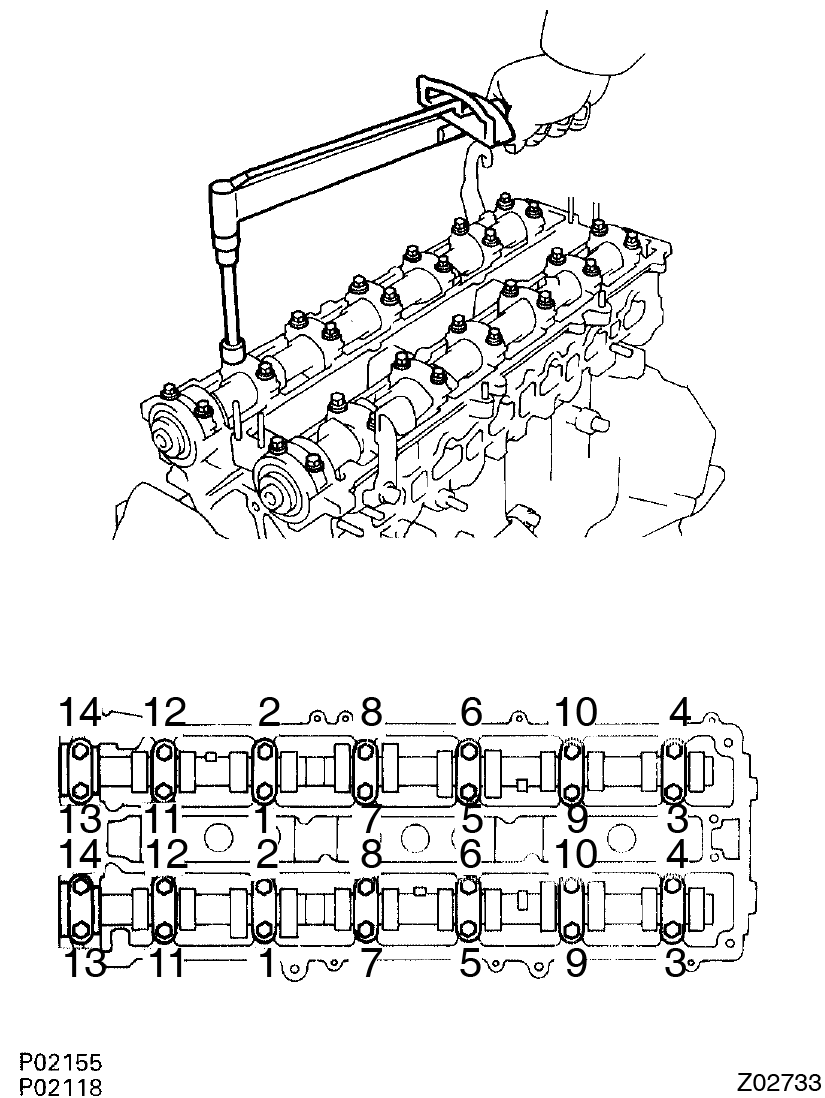
- Using SST, push the 2 oil seals in as far as they can go.
SST 09316-6001 1 (09316-00011, 09316-00051)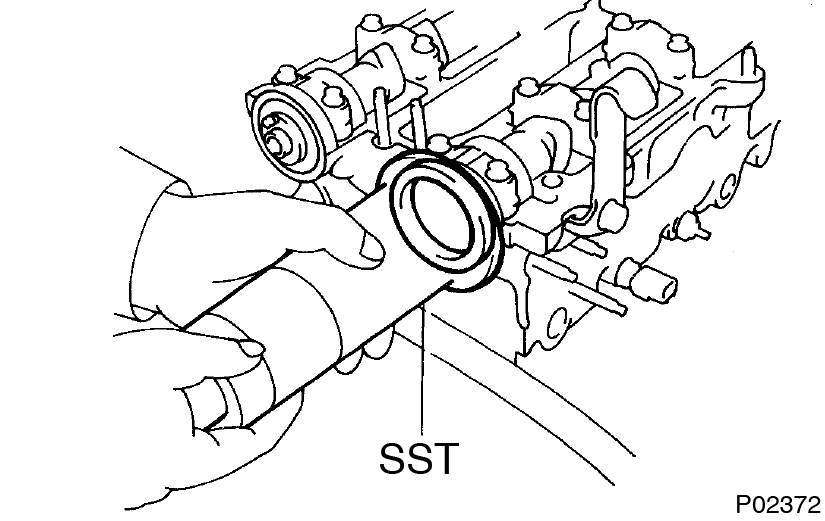
- Rotate the camshaft with a wrench at the hexagon position, bring the forward straight pin up.
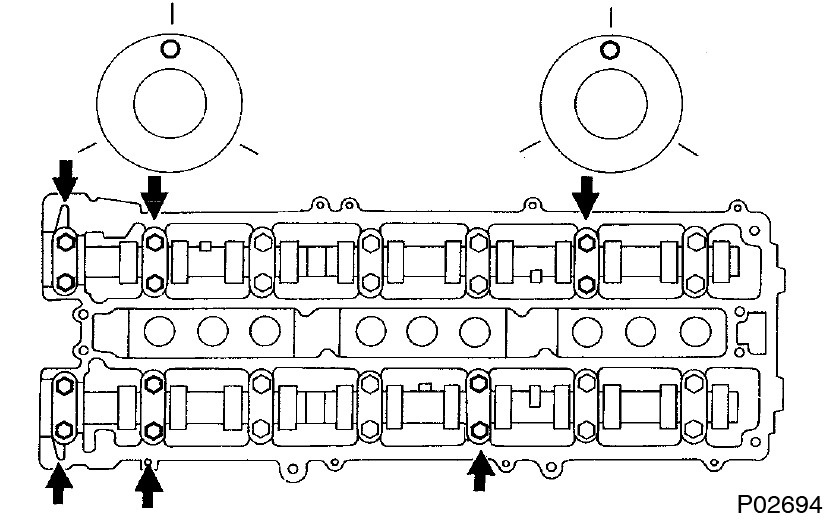
- Loosen the 12 bearing cap bolts as shown, until they can be turned by hand; retighten, in several passes.
Torque: 20 N·m (200 kgf·cm, 14 ft·lbf) - Turn the camshaft 1/3 of revolution.

- Loosen the 8 bearing cap bolts as shown, until they can be turned by hand; retighten, in several passes.
Torque: 20 N·m (200 kgf·cm, 14 ft·lbf) - Turn the camshaft a further 1/3 of a revolution.
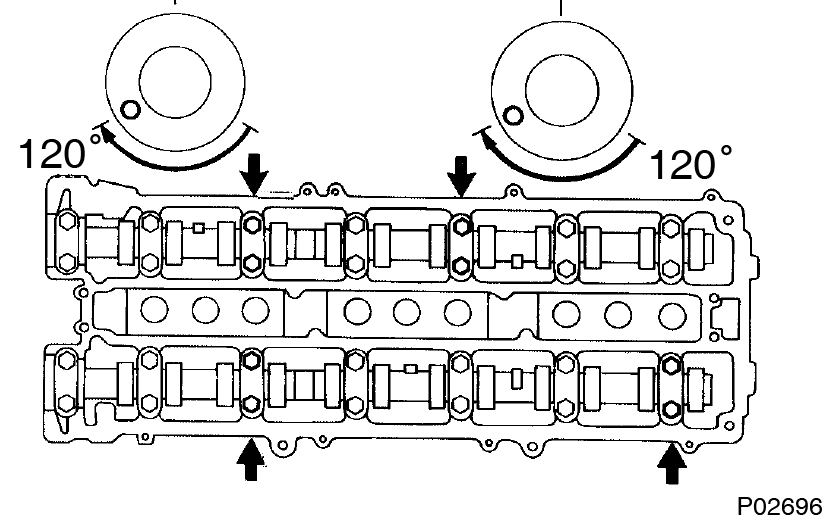
- Loosen the 8 bearing cap bolts as shown, until they can be turned by hand; retighten, in several passes.
Torque: 20 N·m (200 kgf·cm, 14 ft·lbf)
- Apply engine oil to the thrust portion of the camshaft.
- Check and adjust valve clearance (See page EM-4 )
Turn the camshaft, and position the cam lobe upward, check and adjust the valve clearance. - Install No.4 timing belt cover
Install the timing belt cover with 4 bolts.
Torque: 8.0 N·m (80 kgf·cm, 71 in.·lbf)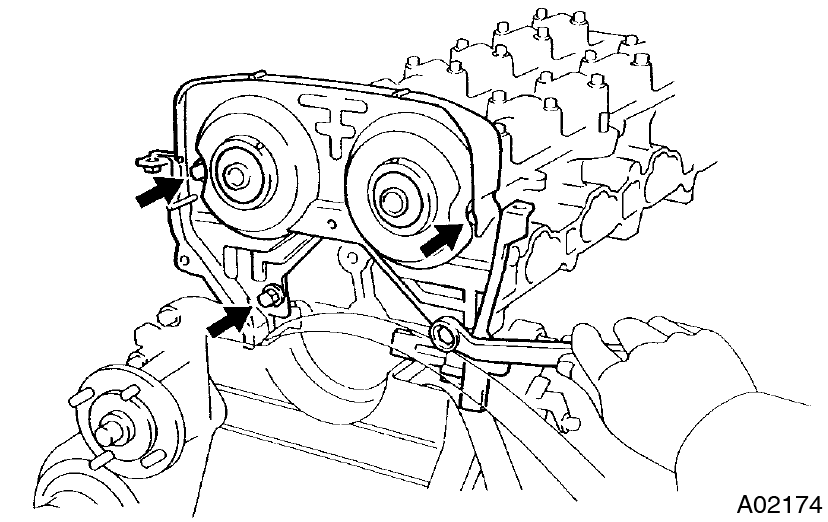
- Install camshaft timing pulleys
- Align the camshaft knock pin with the groove in the pulley, and slide on the pulley.
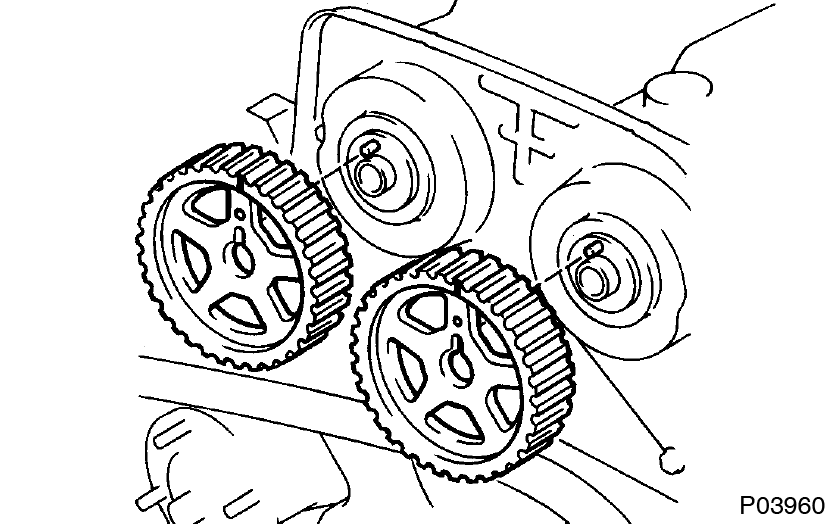
- Temporarily install the timing pulley bolt.
- Hold the hexagon portion of the camshaft with a wrench, and tighten the timing pulley bolt.
Torque: 81 N·m (810 kgf·cm, 60 ft·lbf)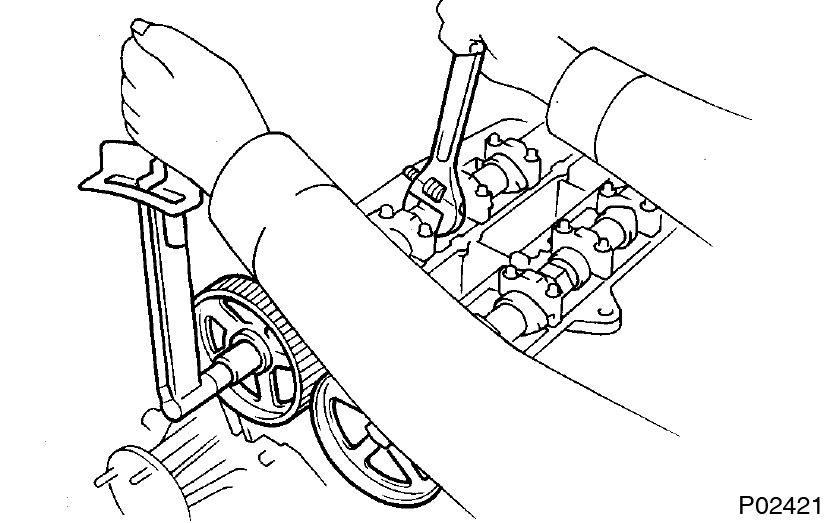
- Align the camshaft knock pin with the groove in the pulley, and slide on the pulley.
- Install No.1 and No.2 cylinder head covers
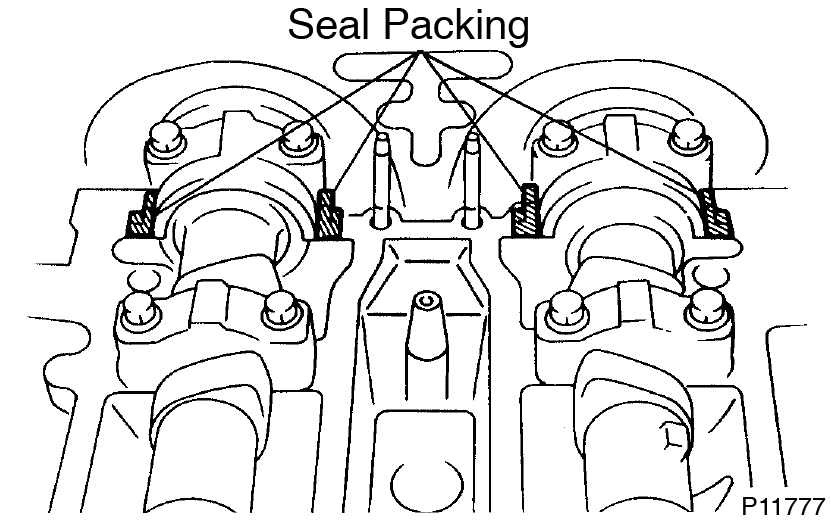
- Remove any old packing (FIPG) material.
- Apply seal packing to the cylinder head as shown in the illustration.
Seal packing: Part No. 08826-00080 or equivalent - Install the gaskets to the No.1 and No.2 cylinder head covers.
- Install the seal washers to the mounting bolts.
- Install the No.1 cylinder head cover with the 4 seal washers and 4 bolts.
Torque: 5.5 N·m (55 kgf·cm, 49 in.·lbf) - Install the No.2 cylinder head cover with the 4 seal washers and 4 bolts.
Torque: 5.5 N·m (55 kgf·cm, 49 in.·lbf) - Install the PCV valve.
- Install the cruise control actuator cable bracket and IAC valve pipe clamp with the 2 bolts.
- Install spark plugs
- Install ignition coils assemblies (See page IG-7 )
- Install timing belt (See page EM-21 )
- Install intake manifold and delivery pipe assembly
Install a new gasket, the intake manifold, delivery pipe assembly and engine wire bracket with the 4 bolts and 2 nuts.
Torque: 27 N·m (280 kgf·cm, 20 ft·lbf)
- Install fuel inlet pipe
- Connect the fuel inlet pipe with 2 new gaskets and the union bolt.
Torque: 42 N·m (420 kgf·cm, 30 ft·lbf)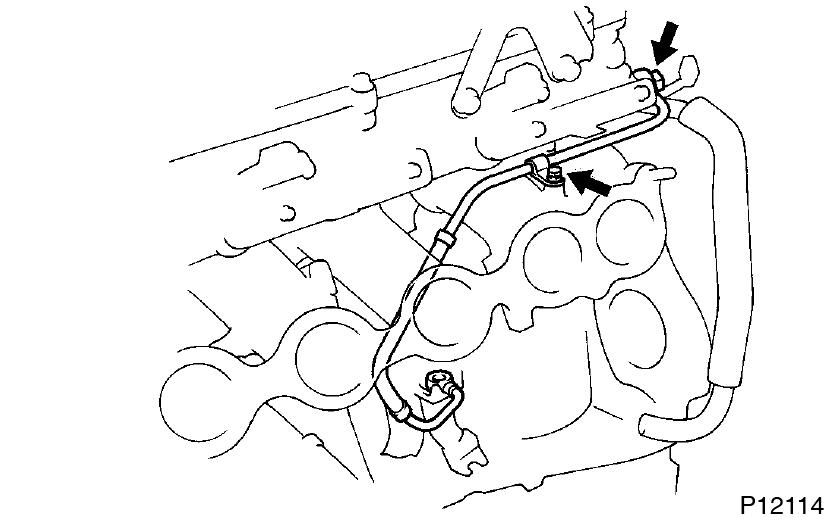
- Install the clamp bolt to the intake manifold.
- Connect the fuel inlet pipe with 2 new gaskets and the union bolt.
- Install fuel pressure pulsation damper (See page SF-32 )
- Install pressure tank and VSV assembly
Torque: 21 N·m (210 kgf·cm, 15 ft·lbf) - Connect engine wire
- Install the engine wire protector to the intake manifold with the nut.
- Install the 2 ground straps to the intake manifold with the bolts.
- Connect these connectors and clamps:
- VSV connector for EVAP
- 6 injectors connectors The No.1, No.3 and No.5 injector connectors are dark gray, and the No.2, No.4 and No.6 injector connectors are gray.
- 2 camshaft position sensor connectors
- 3 engine wire clamps to injector holders
- Install air intake chamber assembly (See page SF-29 )
- Connect fuel return hose
- Install PS pump
Torque: 58 N·m (590 kgf·cm, 43 ft·lbf) - Install No.1 water bypass pipe and water outlet
- Install 2 new O-rings to the No.1 water bypass pipe.
- Apply soapy water to the O-rings.
- Install the No.1 water bypass pipe to the water pump.
- Install a new gasket and the water outlet with the 2 bolts.
Torque: 21 N·m (210 kgf·cm, 15 ft·lbf) - Connect the ECT sensor and sender gauge connectors.
- Connect the upper radiator hose to the water outlet.
- Install drive belt
Install the drive belt by turning the drive belt tensioner clockwise. - M/T:
Install drive belt tensioner damper (See page EM-21 ) - Install exhaust manifold
- Place 2 new gaskets to the cylinder head facing the protrusion as shown.
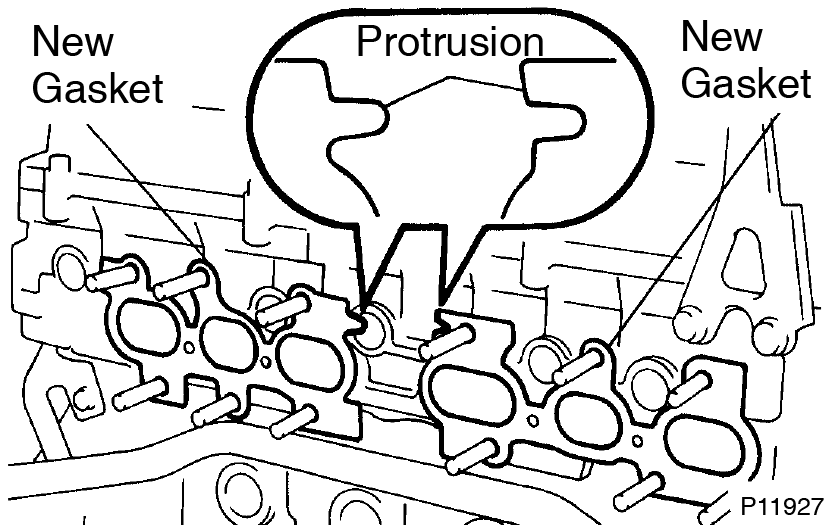
- Install the exhaust manifold with 12 new nuts, in several passes, in the sequence shown.
Torque: 39 N·m (400 kgf·cm, 29 ft·lbf)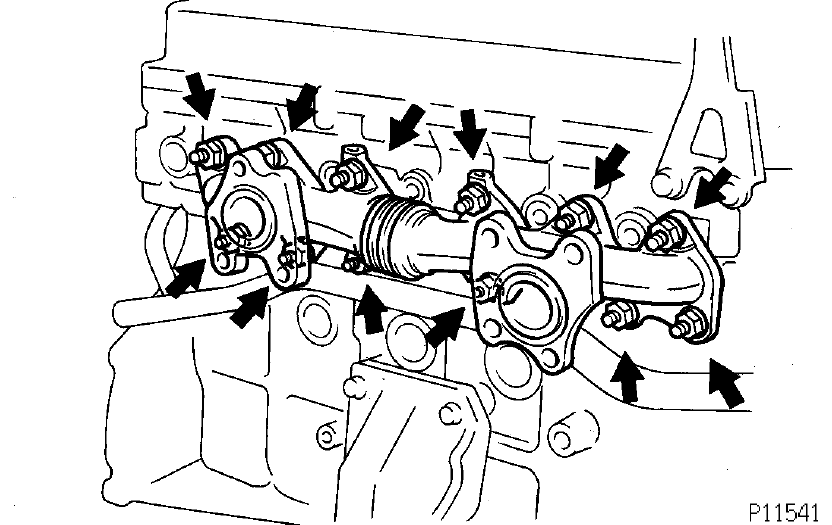
- Place 2 new gaskets to the cylinder head facing the protrusion as shown.
- Install turbocharger (See page TC-20 )




